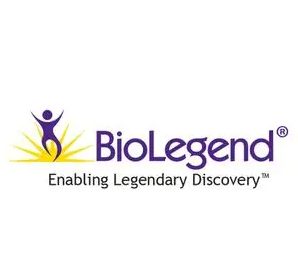APC anti-human CD152 (CTLA-4) Antibody
- 产品名称:
- APC anti-human CD152 (CTLA-4) Antibody
- 产品类别:
- 抗体
- 产品编号:
- 349907
- 产品应用:
- 349907
[价格]
| 规格 |
价格 |
库存 |
| 25tests |
¥ 1428 |
1 |
- Verified Reactivity
- Human
- Antibody Type
- Monoclonal
- Host Species
- Mouse
- Immunogen
- Extracellular domain of human CTLA-4 and human IgG1 Fc fusion protein
- Formulation
- Phosphate-buffered solution, pH 7.2, containing 0.09% sodium azide and BSA (origin USA)
- Preparation
- The antibody was purified by affinity chromatography and conjugated with APC under optimal conditions.
- Concentration
- Lot-specific (to obtain lot-specific concentration, please enter the lot number in our Concentration and Expiration Lookup or Certificate of Analysis online tools.)
- Storage & Handling
- The antibody solution should be stored undiluted between 2°C and 8°C, and protected from prolonged exposure to light. Do not freeze.
- Application
-
ICFC - Quality tested
- Recommended Usage
Each lot of this antibody is quality control tested by intracellular immunofluorescent staining with flow cytometric analysis. For flow cytometric staining, the suggested use of this reagent is 5 ?L per million cells in 100 ?L staining volume or 5 ?L per 100 ?L of whole blood. It is recommended that the reagent be titrated for optimal performance for each application.
- Excitation Laser
- Red Laser (633 nm)
- Application Notes
ELISA Detection: The biotinylated L3D10 antibody is useful as the detection antibody in a sandwich ELISA assay, when used in conjunction with the purified A3.6B10.G1 antibody (Cat. No. 525401) as the capture antibody and recombinant human CTLA-4 (Cat. No. 591909) as the standard.
Flow Cytometry: The fluorochrome-labeled L3D10 antibody is useful for immunofluorescent staining and flow cytometric analysis to identify CTLA-4-producing cells within mixed cell populations.
Note: For testing human soluble CTLA-4 in serum, plasma or cell culture supernatant, LEGEND MAX? Human Soluble CTLA-4 ELISA Kit with Pre-coated Plates (Cat. No. 437407) are specially developed and recommended.
Additional reported applications (for the relevant formats) include: Blocking of CTLA-4/B7-1 interaction and blocking of CTLA-4-mediated inhibitory function to promote T cell expansion1,2.
This clone has been tested in-house and determined to not be suitable for applications in immunohistochemistry of frozen or paraffin-embedded tissue sections (IHC-F or IHC-P).
- Application References
(PubMed link indicates BioLegend citation) -
- May K, et al. 2005. Blood 105:1114. (Block)
- Lute K, et al. 2005. Blood 106:3127. (Block)
- Product Citations
-
- Garcia–Perez JE, et al. 2019. Front Immunol. 10:998. PubMed
- Arce Vargas F et al. 2018. Cancer cell. 33(4):649-663 . PubMed
- Poussin M, et al. 2021. J Immunother Cancer. 9:. PubMed
- Shevyrev D, et al. 2021. Exp Ther Med. 209:21. PubMed
- Theodoraki MN, et al. 2021. Br J Cancer. 125:1677. PubMed
- Nou?l A, et al. 2015. J Autoimmun. 59:53. PubMed
- Park S, et al. 2020. Biosens Bioelectron. 112389:165. PubMed
- Kumagai S, et al. 2020. Immunity. 53(1):187-203.e8. PubMed
- Linedale R, et al. 2017. PLoS One. 12:e0175755. PubMed
- Scherpenisse M, et al. 2021. MBio. 12:. PubMed
- Levin MJ, et al. 2018. J Clin Invest. 128:4429. PubMed
- Theodoraki MN, et al. 2019. Oncoimmunology. 8:1593805. PubMed
- Chellappa S, et al. 2019. J Immunol. 202:1397. PubMed
- RRID
- AB_10680785 (BioLegend Cat. No. 349907) AB_10679122 (BioLegend Cat. No. 349908)
- Structure
- Ig superfamily, 33 kD
- Distribution
-
Activated T cells and B cells
- Function
- Negative regulator of T cell activation
- Interaction
- Antigen presenting cells, such as dendritic cells
- Ligand/Receptor
- B7-1 (CD80), B7-2 (CD86)
- Cell Type
- B cells, T cells, Tregs
- Biology Area
- Immunology, Inhibitory Molecules
- Molecular Family
- CD Molecules, Immune Checkpoint Receptors
- Antigen References
-
1. Barclay N, et al. The Leukocyte Antigen FactsBook. Academic Press Inc. San Diego.
2. Kuiper H, et al. 1995. J. Immunol. 155:1776.
3. Lindsten T, et al. 1993. J. Immunol. 151:3489.
4. Morton P, et al. 1996. J. Immunol. 156:1047.
- Gene ID
- 1493 View all products for this Gene ID
- UniProt
- View information about CD152 on UniProt.org
